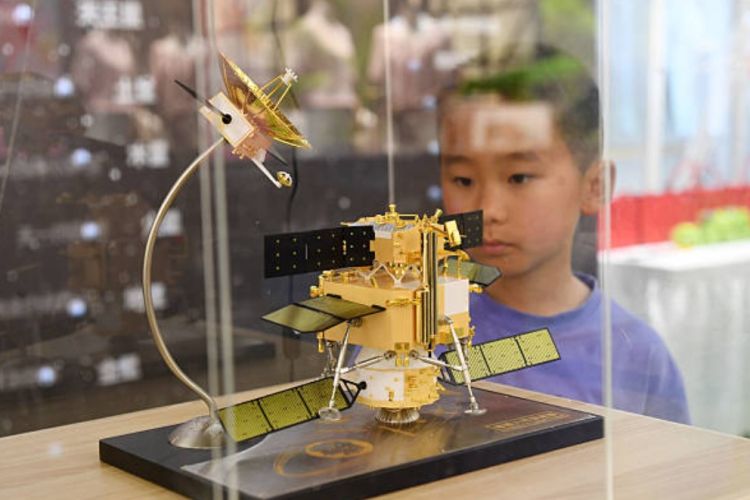Chinese technological leadership: In 2007, the launch of Apple’s iPhone marked a moment when American innovation seemed unassailable. At the time, only a tenth of China’s population had access to the internet. Today, less than two decades later, China is on the cusp of redefining global technological leadership. The signs are everywhere—from the commercial dominance of BYD and TikTok to DeepSeek’s startlingly competitive large language models. For a world still clinging to Cold War-era binaries of Western superiority and Eastern mimicry, this is a jarring realignment of expectations.
And yet, it is not entirely unexpected. The West, particularly the United States, is being outpaced not because of a lack of talent or vision, but because of a failure to adapt to a new model of innovation—one that China has mastered: state-led capitalism fused with entrepreneurial ferocity.
READ | Spain-Portugal blackout exposes Europe’s green energy agenda
Diffusion over invention
Let us be clear: the West still leads in foundational innovation. American firms dominate the design and architecture of cutting-edge AI, semiconductors, and quantum computing. But that is not the whole story. The prize in this race goes not just to the inventor but to the one who diffuses innovation fastest and most effectively across society.
China understands this better than any nation today. As the reports show, Chinese firms are distributing AI models for free, allowing developers across the globe to adapt and improve them. DeepSeek’s March 2025 update to its LLM is now considered to be the best non-reasoning model available—an achievement built not only on state support but also on an ecosystem engineered for scale and iteration.
Meanwhile, the United States is fencing its technology behind paywalls, proprietary constraints, and geopolitical paranoia. American tech giants train multi-billion-dollar models but keep them behind the velvet rope, accessible only to those who can pay. China’s response is not to whine, but to work—relentlessly.
Behind Chinese technological leadership
We must also acknowledge the engine beneath Chinese technological leadership. Its domestic ecosystem is ruthless, brutally competitive, and constantly in flux. The Chinese state, with its long-term planning horizon, has created industrial zones, tax incentives, and STEM education pipelines that produce a steady stream of talent. Huawei, Baidu, DJI, and DeepSeek are not anomalies; they are proof of a resilient system that marries manufacturing scale with technological sophistication.
In 2023, China installed more industrial robots than the rest of the world combined. Its EV manufacturers, such as BYD and Xiaomi, are not just making cars—they are exporting them, including to mature Western markets. Meanwhile, Apple has shelved its decade-long effort to develop its own electric vehicle, after squandering $10 billion.
In semiconductors, where US sanctions have sought to clip China’s wings, companies like HiSilicon and SMIC have shown startling resilience. China is producing 7nm chips, approaching 5nm, and though still behind TSMC’s 2nm benchmark, the gap is narrowing—not widening.
The myth that China cannot innovate because of its political system has long been the West’s security blanket. The truth is more nuanced and more dangerous: China is innovating in ways that suit its system. It is not beholden to the Silicon Valley start-up cult. It does not wait for venture capital validation. It builds what it needs.
DeepSeek’s rise is emblematic. Its model was built at a fraction of the cost of OpenAI’s GPT-4 and is being embraced globally because of its open-source approach. Meanwhile, Western governments are trying to ban TikTok and Xiaohongshu rather than counter them with better alternatives. The West’s response is reactive, protectionist, and unstrategic.
That is not a plan. That is fear.
What the world must do
The West must accept that it is no longer the undisputed leader. That humility will allow for recalibration.
First, it must double down on diffusion. The US and its allies must build ecosystems that encourage open-source innovation while maintaining ethical and democratic guardrails. There is no shame in learning from Chinese technological leadership—particularly its model of public-private cooperation, strategic industrial policy, and support for scale.
Second, allies must coordinate. Germany, South Korea, Japan, and the UK must pool resources to ensure technological self-reliance in strategic sectors. This is not about matching China brick for brick—it is about becoming indispensable in select technologies: quantum, nuclear fusion, advanced photonics.
Third, the West must invest not just in innovation but in manufacturing. The US CHIPS Act is a good start, but it will mean little unless the West builds the industrial muscle to commercialise breakthroughs at scale.
Finally, the West must win the narrative war. Chinese technology is viewed with suspicion, partly because of legitimate concerns about surveillance. But the West cannot just ban Chinese products—it must offer better alternatives that reflect democratic values, inclusivity, and user trust.
Strategic autonomy for the Global South
With China embarking on tech diplomacy, the Global South needs to find its own place in the sun. Instead of aligning with Washington or Beijing, these countries must build strategic autonomy by benefiting from big power rivalry.
Here lies the opportunity: to prevent a bifurcated tech ecosystem where the West dominates some regions, and China the rest. The time to act is now.
This is not merely a race for GDP. It is a contest over who writes the rules of the Fourth Industrial Revolution. The future will be shaped by those who build the operating systems of our economies, our cities, and even our minds. China, through a potent mix of scale, speed, and ambition, is positioning itself as that rule-maker.
The West can still hold up—but only if it understands that this is no longer about catching up or holding back. It is about forging a new path that accepts China’s strengths and prepares for a world where innovation is multipolar.
History does not wait. Nor does technology.

